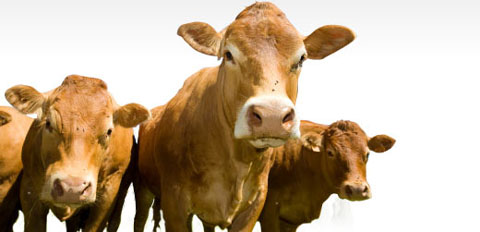
From BEEF Cow-Calf Weekly
By Scott B. Laudert, Ph.D.
a beef cattle technical consultant based in Woodland Park, Colorado.
Shortening the calving season is among the most effective practices a cow-calf producer can implement. Improving early calving frequency increases weaning weight and enhances carcass value.
Two recent university reports evaluated the result of shortening the calving season on cow, calf and economic performance. Interestingly, the projects occupied opposite ends of the calving season spectrum:
* A 60-day breeding season reduced to 45 days, and
* 270+ -day average calving seasons reduced to less than 90 days. (A 2009 USDA survey found 54.5% of all beef cow operations had no set calving season.)
University of Nebraska researchers evaluated synchronizing naturally mated mature cows exposed to bulls for a 45-day breeding season by using a single prostaglandin injection. Synchronized cows were compared to non-synchronized cows exposed to bulls for a 60-day breeding season. Timing of the prostaglandin injection is critical; in this study, it was administered 108 hours after fertile, mixed-age bulls were turned in with the cowherd. The bull-to-cow ratio did not exceed 1:25.
Estrus synchronization resulted in more (P<.01) calves being born during the first 21 days of the calving season (73% vs. 61%) and did not impact the total number of calves born or the percent of cows subsequently determined to be pregnant. Calf birth weight and percent assisted births favored (P<.01) the synchronized cowherd. Assisted births were reduced from 4.4% to 1.7%. Calf weaning weight was increased (P<.01) by 20 lbs. in the synchronized cowherd. In a related study of calving frequency on steer calf feedlot performance and carcass quality, 659 steers were evaluated by period of birth defined as first, second or third 21-day period of the calving season. Steers were on feed about 218 days and managed and fed as a common group. Weaning weight favored (P<.01) steers born during the first 21-day calving period by 32 and 60 lbs., respectively, over steers born during the second or third calving periods. Carcass weight, like weaning weight, favored (P<.01) steers born during the first 21-day calving period. The older steers had carcass weights 16 and 45 lbs. heavier than steers born during the second or third calving periods. Marbling score and the percentage of carcasses grading average Choice or higher favored (P<.01) steers born during the first 21-day calving period. Additional carcass weight and quality grade combined to allow calves born early in the calving season to have higher (P<.01) carcass value than calves born later in the calving season. Meanwhile, University of Arkansas Extension specialists evaluated the effects of reducing calving-season length in six cooperator cow-calf operations using a three-part plan: * Determine the existing calving distribution, * Establish the season and length of the desired calving season, and * Develop a management plan to transition the cowherd to the desired calving season. Over time, the length of the breeding season was restricted to obtain the desired calving-season length. Management practices employed included supplement and mineral feeding, bull breeding soundness exams, moving cows from a spring to fall or fall to spring calving season, and other management factors that could affect reproduction rates. The average benchmark calving season for the six cowherds was determined to be 273 days in length, and all producers elected to strive toward a 90-day or less calving season. The average length of the calving season was reduced (P<.01) from 273 to 85 days. The average number of years for producers to reach the desired calving season goal was 3.8. The percentage of cows calving during the final desired calving season increased (P<.01) from 46% to 92%. Income per animal unit (1,000-lb. cow) over specified costs increased (P<.15) from $95 to $190 from the first to the last year of the project. Read the full reports at http://beef. unl.edu/beefreports/201004.shtml and http://arkansasagnews.uark.edu/574-21.pdf.
